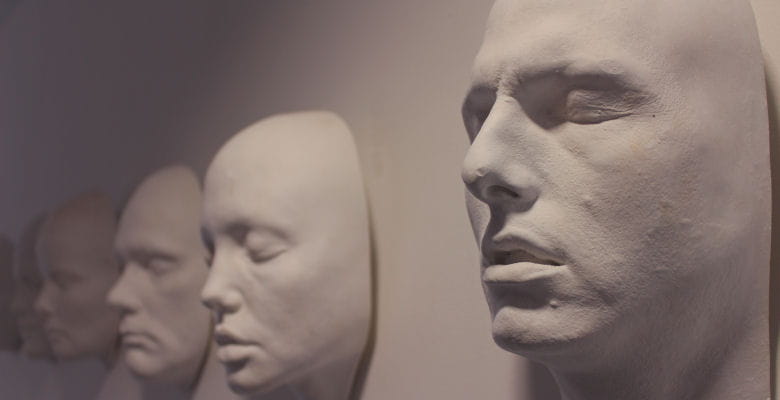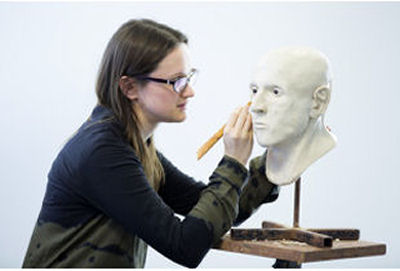LJMU's Face Lab reveals faces of the past and present

The Face Lab is a research group based at the University’s School of Art and Design which completes forensic and archaeological research as well as consultancy work for organisations such as the Police, national and international museums and forensic institutes. Police forces will use the facility to help identify dead bodies and make e-fits of criminals based on witness accounts or partial CCTV evidence. The Face Lab will also be able to produce facial images for forensic scientists following the discovery of decomposed bodies and it will be used by archaeologists to find out how figures from the past would have looked, by reconstructing profiles based on recovered skulls and historical evidence.
Research conducted at the highly specialised lab relates to CCTV identification, post-mortem decomposition, ancestry determination, craniofacial reconstruction, preserved bodies and facial animation. It is equipped with the latest technology including laser scanning and 3D-printing as well as modelling, texturing, animation and haptic reconstruction software.
 Craniofacial analysis and reconstruction involves the depiction and identification of unknown bodies for forensic investigation or historical figures for archaeological interpretation. This may involve post-mortem depiction, facial reconstruction, craniofacial superimposition and skull reassembly. Forensic art and facial depiction takes into account witness interviews or historical evidence to produce facial sketches/composites, age progression images and facial image comparison.
Craniofacial analysis and reconstruction involves the depiction and identification of unknown bodies for forensic investigation or historical figures for archaeological interpretation. This may involve post-mortem depiction, facial reconstruction, craniofacial superimposition and skull reassembly. Forensic art and facial depiction takes into account witness interviews or historical evidence to produce facial sketches/composites, age progression images and facial image comparison.
The Director of the Face Lab is Professor Caroline Wilkinson who is also the recently appointed Director of LJMU’s School of Art and Design. Professor Wilkinson is accredited as a forensic anthropologist Level I (craniofacial specialism) by the Royal Anthropological Institute (RAI) and is an experienced forensic practitioner. She began her professional career as a medical artist and has an MPhil in Medical Art and a PhD in Facial Anthropology. Her work is exhibited in over 30 galleries and museums worldwide and she has had research collaborations with many high profile research institutes including the Max Planck Institute, the Fraunhofer Institute and the Home Office Centre for Applied Science and Technology. She is a keen advocate of art-science collaboration and is committed to increasing public awareness of this cross-disciplinary field. Her research has included high impact cases such as the craniofacial analysis and depiction of Richard III, Mary, Queen of Scots and Robert Burns.
Professor Wilkinson commented: “We look forward to working with the region’s police, forensic organisations and museums to reveal faces of the past and present, as well as a continuation of our national and international work. We also intend to make the research of the Face Lab accessible through our public engagement activity and exhibition contribution, and we plan to run a related art-science postgraduate course at Liverpool School of Art & Design in the near future.
LJMU Vice-Chancellor Professor Nigel Weatherill added: “We are delighted to launch the Face Lab which will become renowned as a centre of excellence for craniofacial analysis and forensic art. The University already has outstanding relationships with Police Forces and museums across the North West and we hope the Face Lab will build upon these relationships. Through public lectures regarding the work of the Face Lab we will also aim to further advance our position as a modern civic University.”
The event was attended by BBC TV and the Liverpool Echo. To read the Financial Times interview with Professor Wilkinson about her research and the Face Lab, click here (opens in a new tab)
The Face Lab also made national and international headlines last month when LJMU scientists used state-of-the-art software to recreate the face of St Nicholas, the Greek bishop who died nearly 1,700 years ago and became better known as Santa Claus.


